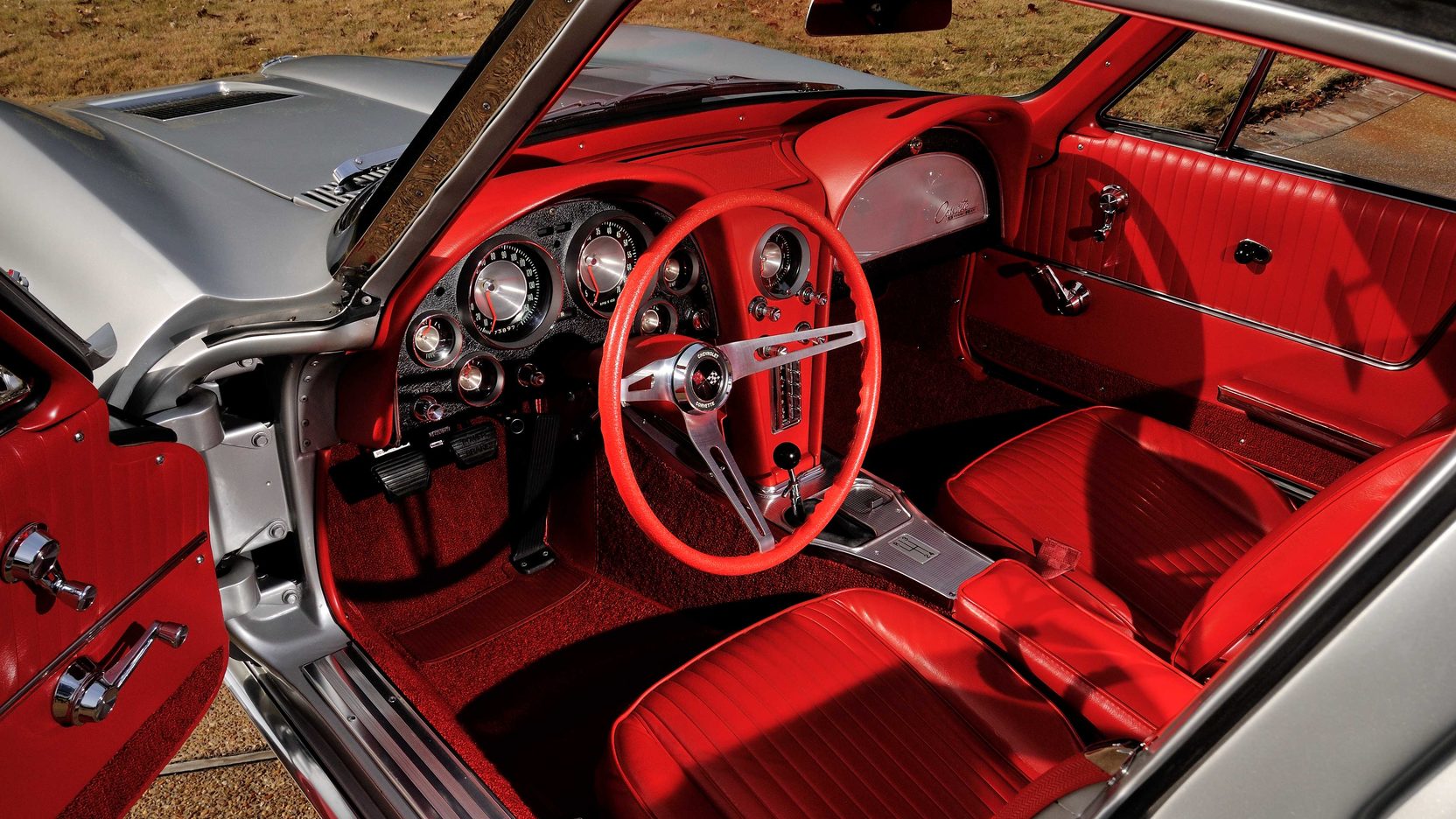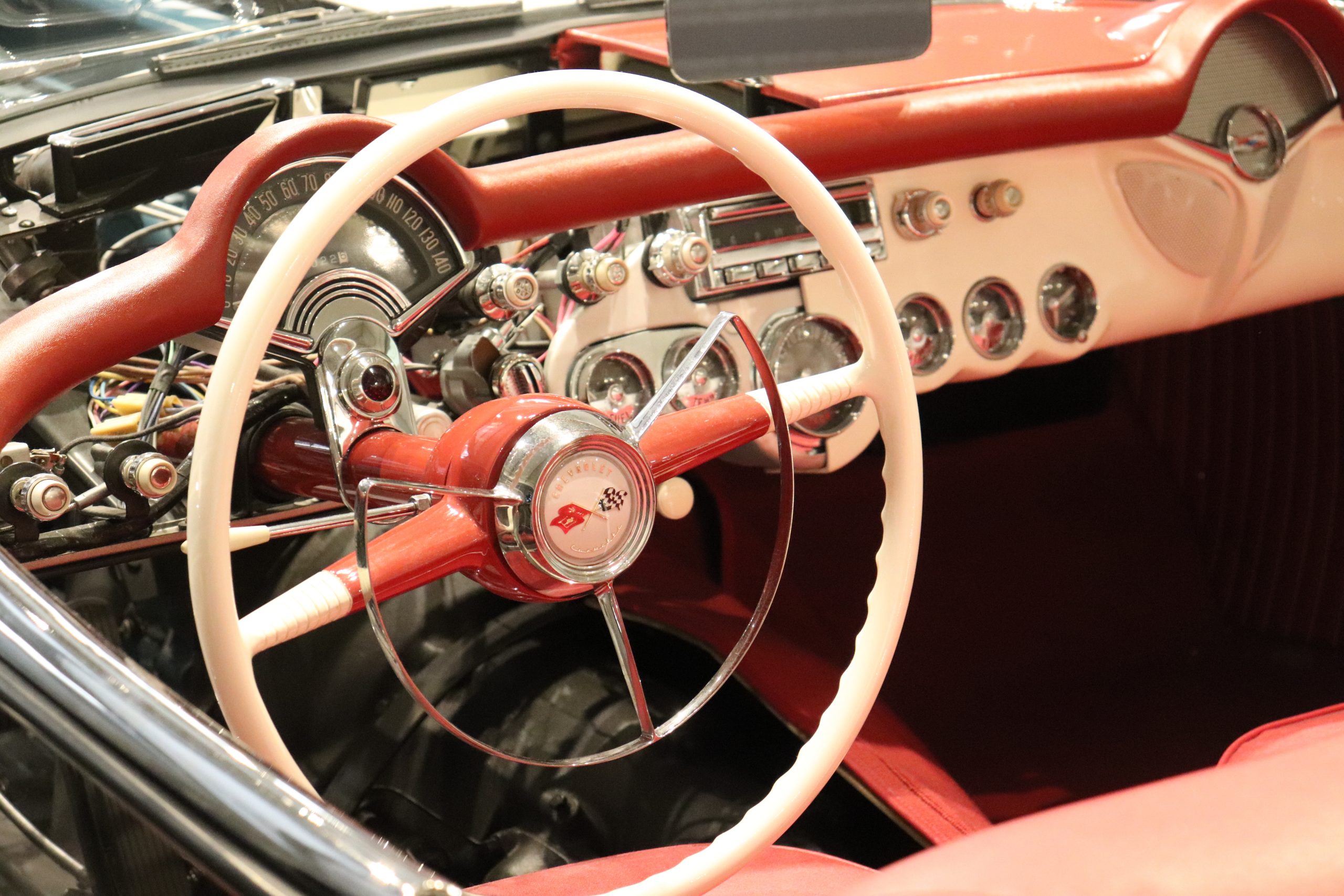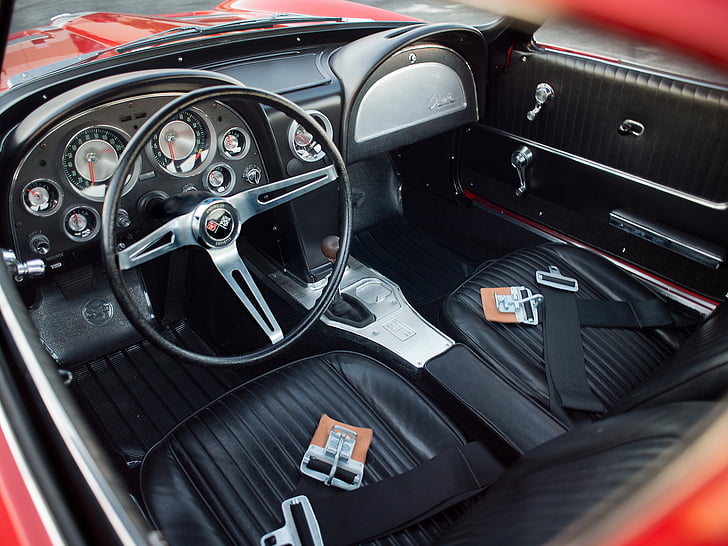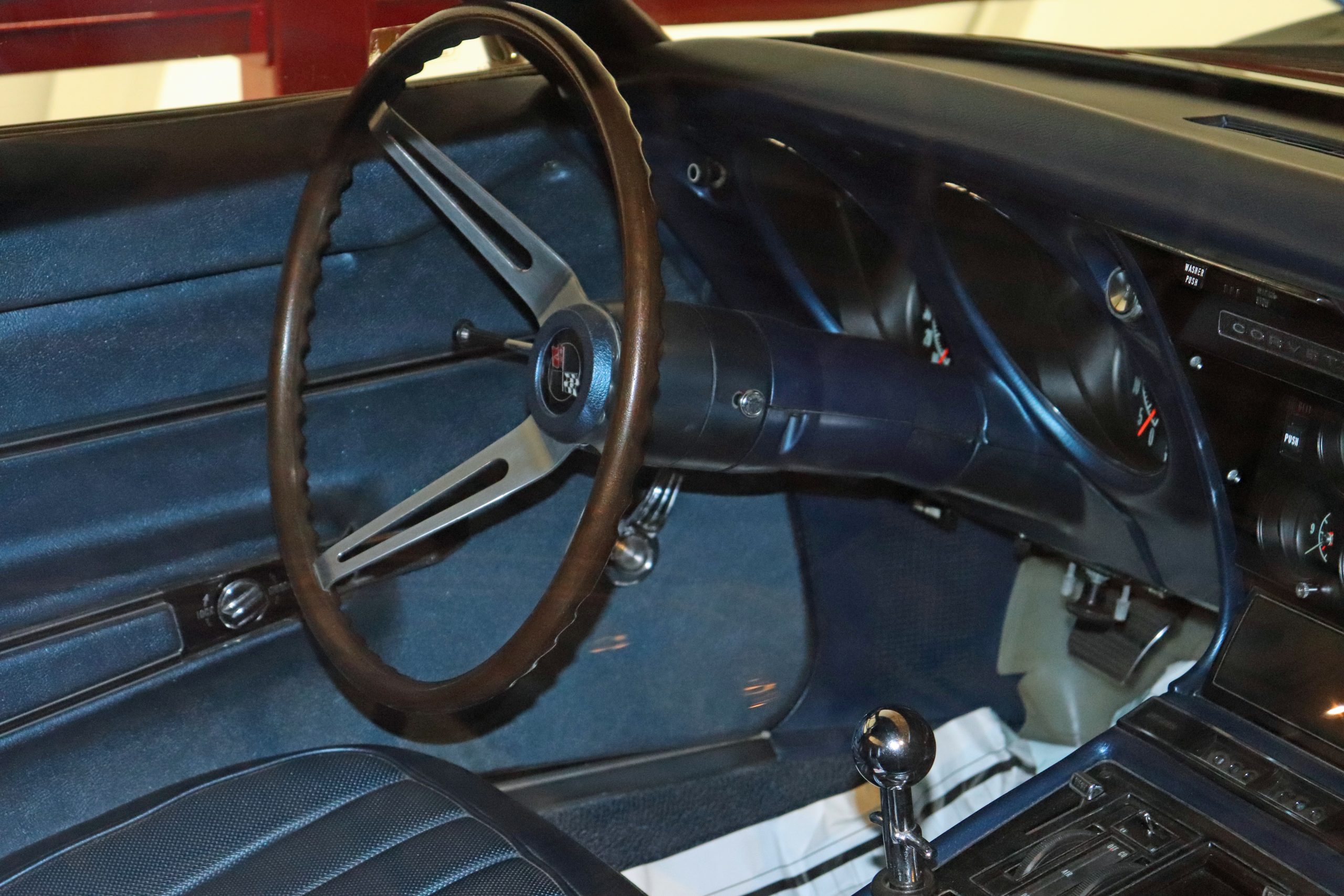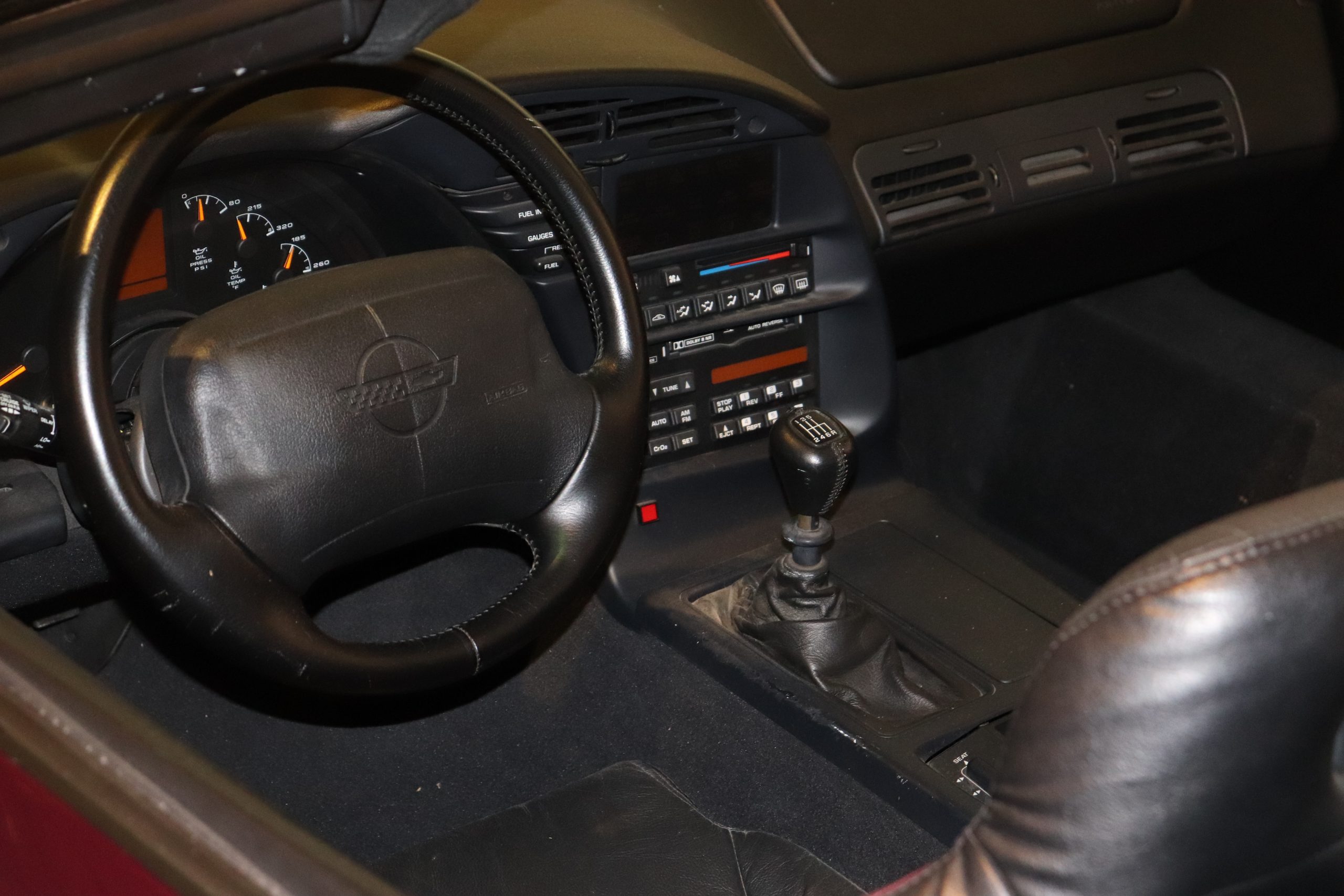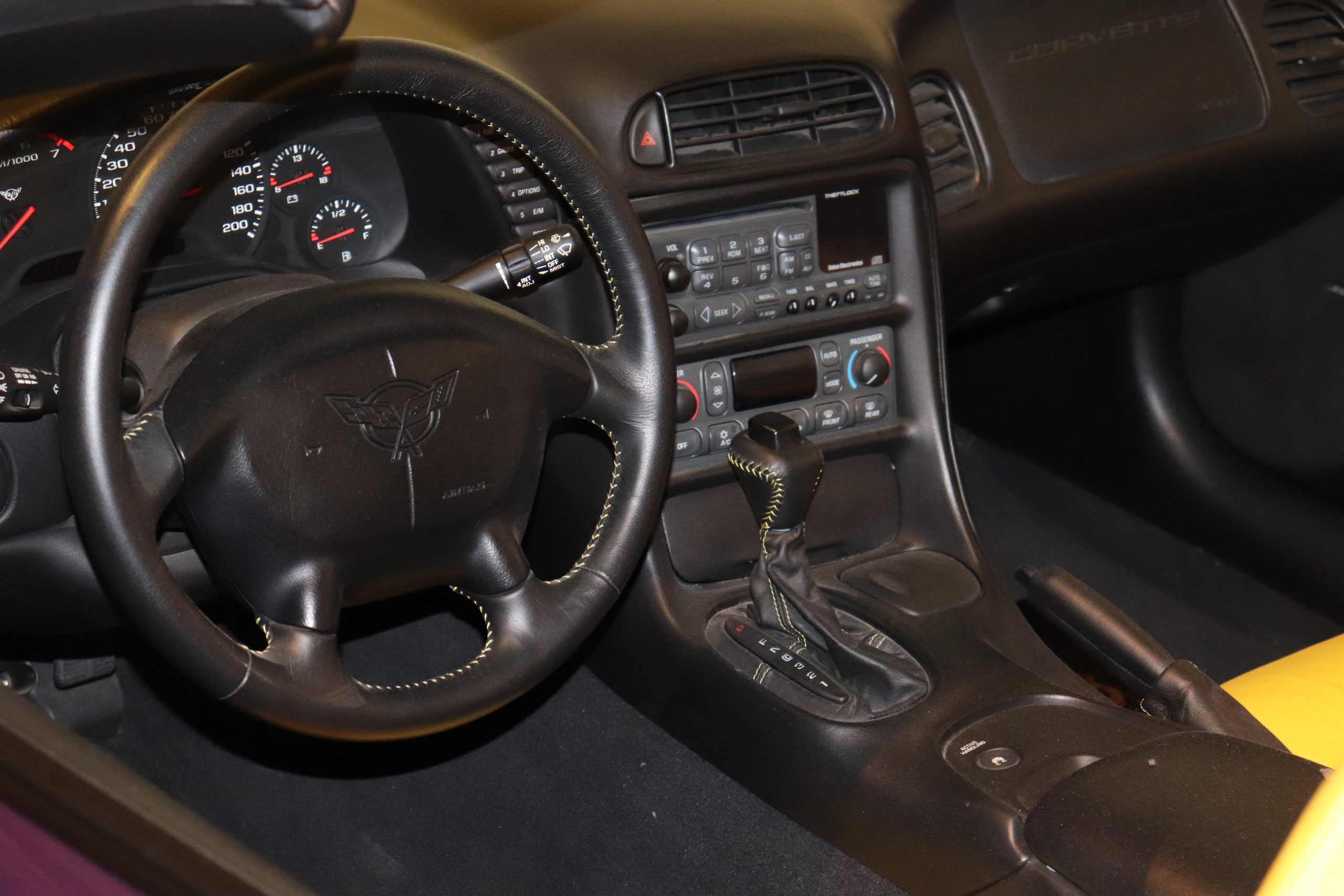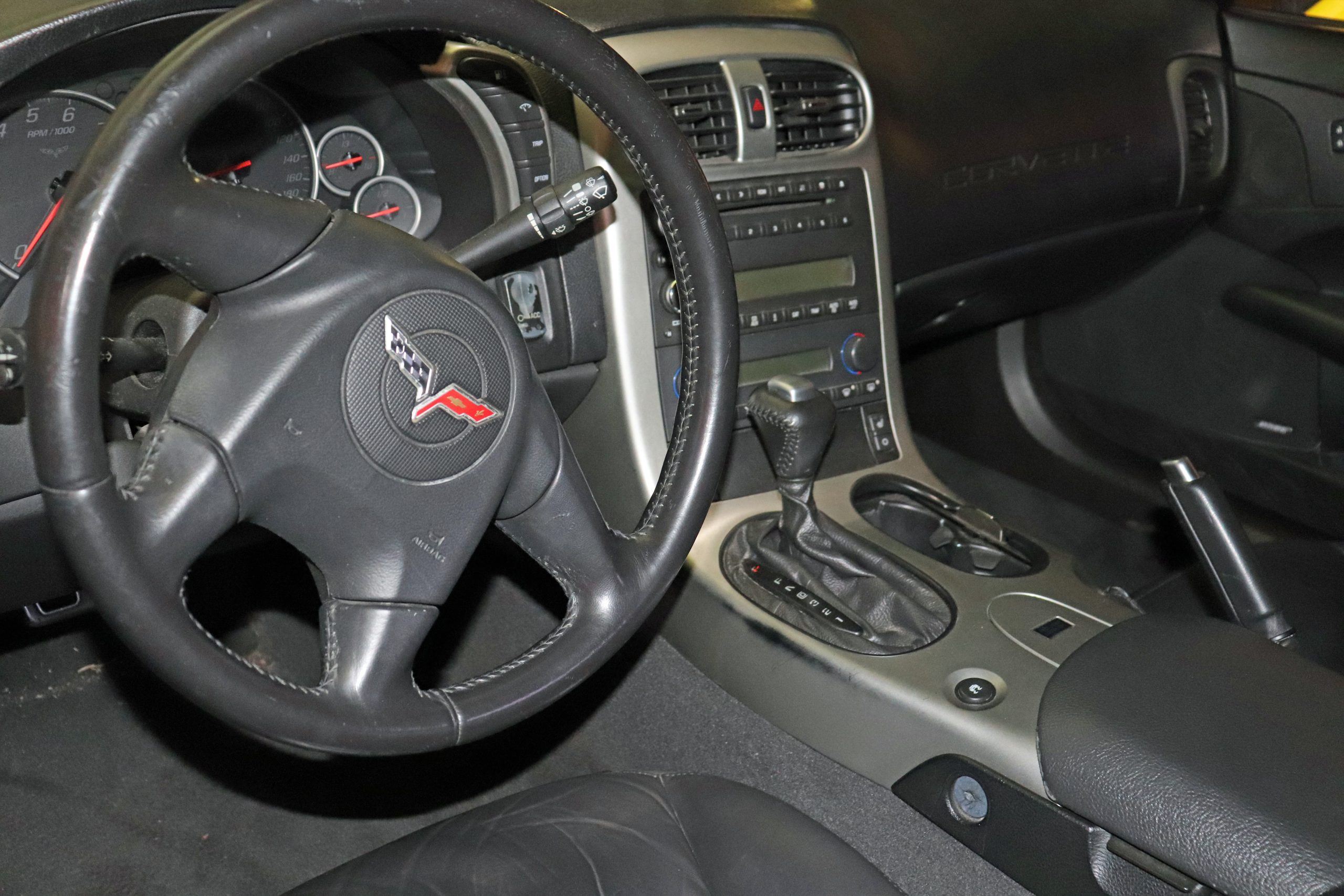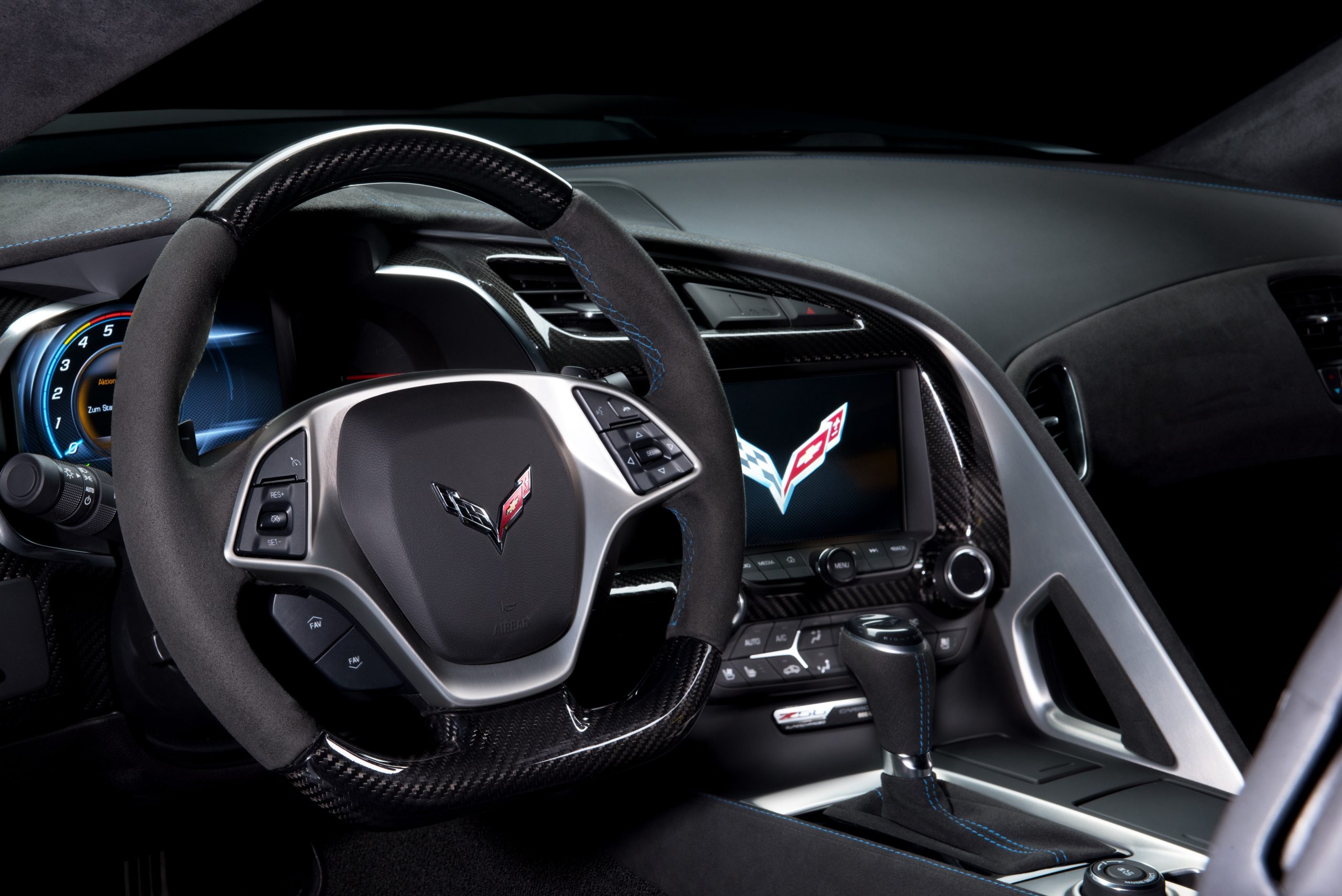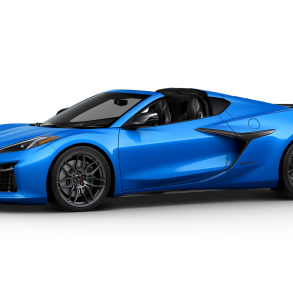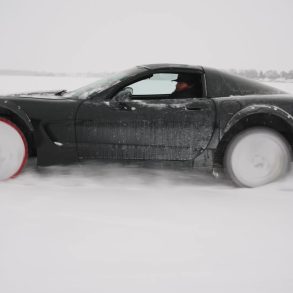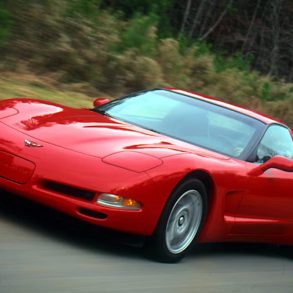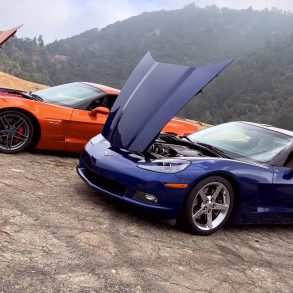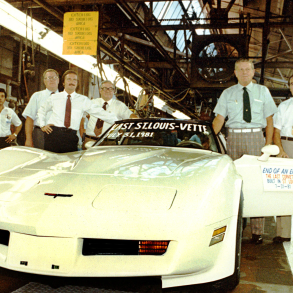Corvette Steering Wheels and Dashboards For All Generations
It is no secret that the Corvette has undergone an abundant number of design changes, both mechanically and cosmetically, since its inception in 1953. These changes have been wide-sweeping and often drastic in their reach, leaving not a single square inch of the iconic American sports car unchanged by the hands of time.
Among these notable changes have been subsequent redesigns of the Corvette interior. As such, the Corvette steering wheel, dash, and instrument panels have all seen continual redevelopment, in an attempt to realign with the times and to provide consumers with a completely revolutionary in-cockpit experience.
Each generation of Corvette has yielded its own unique dash and steering wheel design, offering each a level of nostalgia all their own. Owners and enthusiasts alike can identify with the interior stylings of a particular year model Corvette that they find themselves enamored with.
It is for this reason that many collectors and restorers will spare no expense when attempting to bring their Corvette’s interior back to its former glory, by reconditioning it to a state that is consistent with that as it was the day in which the car rolled off of the assembly line.
What follows is a look back at the storied and ever-changing history of the Corvette steering wheel and dash.
C1 Corvette Steering & Dash
When looking back upon the many renditions of the Corvette, few can rival the clean stylish look of the dash and steering wheel that adorned the early first-generation cars. These early C1 Corvettes featured airplane-style gauges that were mounted in series along a horizontal plane, at the center point of the vehicle’s dash. They were eventually relocated to their behind the wheel location, later in the generational run.
Also included was a hooded speedometer, situated directly above the steering wheel. A central mounted AM radio, flanked by switches to each side, was situated just above the C1’s gauges.
The early C1 Corvettes featured a steering wheel that is not easily forgotten by those that have set in the driver’s seat of these first-generation classics. Coming in at just under 17-¼” and featuring a chrome horn ring, crossed flags center emblem, and Sportsman Red accents, these early Corvettes’ steering wheels were a thing of beauty.
Later in the C1’s run, a new tri-spoke steering wheel became standard, which featured a series of three circular bores per spoke that made the wheel easily recognizable and aesthetically pleasing.
C2 Corvette Steering & Dash
Though the dash and steering wheel of the first generation Corvette was indeed easy on the eyes, there were a substantial number of changes to the driver’s compartment that could be observed upon the C2’s 1963 release. Chevrolet opted for a more practical design when setting the C2 Corvette dash layout.
By this point, the vehicle’s gauges, including a speedometer, tachometer, fuel gauge, temperature gauge, oil pressure gauge, and ammeter, had all been relocated into a centralized panel directly behind the steering wheel, well within the view of the driver. The cigarette lighter was also relocated to a point within closer proximity to the steering wheel. The C2’s interior was fitted with a cowl-ventilation system and a spacious glove box, as well as a clock and vertically mounted radio.
The Sting Ray also saw modifications to its steering wheel in both size and styling. Gone were the circular cutouts of the previous generation that were contained within the wheel’s tri-spoke design. These were now replaced with elongated cutouts, though the tri-spoke layout remained. Throughout the Corvette’s second generation, several steering wheel finishes were offered, including simulated wood-grain and Real Teak.
C3 Corvette Steering & Dash
The third-generation Corvette saw its gauges, except for the speedometer and tachometer, once again relocated toward a central location within the dash. These gauges now resided toward the upper end of the C3’s console. The vehicle’s speedometer and tachometer now took on a larger than life presence in their location behind the steering wheel, essentially monopolizing the space in this region due to their robust size.
Within the Corvette’s lengthy third-generation run, subsequent additional changes were made pertaining to dash layout and functionality. These changes included fiber-optic exterior light monitors, the addition of an electronically driven tachometer, new metric denotations on the speedometer, and the replacement of the previously used ammeter with a voltmeter.
The C3’s steering wheel, for the most part, retained its previous C2 stylings for the majority of its run. However, this all changed in 1977. This year saw the unveiling of an all-new, 14” diameter, leather-wrapped steering wheel that featured a floating horn button. Additionally, the Corvette’s steering column was repositioned 2” closer to the dash, and tilt-telescopic function came on-line as an option
C4 Corvette Steering & Dash
With the inception of the fourth-generation Corvette came revolutionary changes to nearly all aspects of the iconic sports car’s interior, and the dash was certainly no exception. To many new C4 owners, their Corvette’s dash looked like something out of a science fiction movie. Gone were the dated and bulky gauges of the past. Instead, an all-new electronic liquid crystal display was put into production.
This first of its kind electronic instrument cluster featured digital readouts for all vehicle and engine data, including graphing of speed and rpm in a color-coordinated display capable of being illuminated in green, yellow, and red based upon real-time data. A new Driver Information Center was also present just above the steering column that displayed the vehicle’s fuel level in analog form. This information center also allowed drivers to scroll through various functions to monitor conditions such as system voltage, fuel economy, coolant temperature, oil pressure, and odometer readings.
The C4 Corvette’s steering wheel did vary from that of previous generations, though not nearly as drastically as changes to the generation’s dash and gauge composition. The steering wheel of the C4 took on a two-spoke design, embossed with a redesigned crossed flags logo. The horn button consisted of a raised floating design that was set slightly above the central meeting point between the wheel’s two spokes. Later renditions of the C4 came standard with an airbag-equipped steering wheel, which featured a more pronounced, rectangular central region from that of years prior.
C5 Corvette Steering & Dash
Upon the C5’s 1997 release, consumers and enthusiasts alike quickly noted that great strides had been made in the design of the Corvette’s interior. The Corvette itself had begun to shed the long-standing image that it had clung to for an extended period of time during the C3’s reign, favoring a more modernized design. With these changes came an entirely redesigned dash that falls more in line with what most are accustomed to in the modern era.
Returning once again were standard dial style gauges, which came as a notable departure from the previous generation’s liquid-crystal display. A small digital readout was featured in the C5 just above the steering column and corresponded with a number of functional-based switches to the right quadrant of the cluster. Perhaps the most notable of all C5 dash functions was the advent of its Heads-Up display. This feature allowed drivers to view vital data such as RPM’s, speed, and oil pressure without ever taking their eyes off of the road ahead, as these figures are projected upward onto the car’s windshield.
The C5’s steering wheel appeared upon its release, to be less of a complete redesign from renditions of the past, and more of a continuation of the already evolving face of the C4 steering wheel. The C5 featured a four-spoke, black leather covered steering wheel that came air-bag equipped. The wheel was embossed in the center with the brand’s flagship crossed flags emblem.
C6 Corvette Steering & Dash
The C6 Corvette’s dash, upon initial examination, appears to have changed little from its predecessor. However, subtle changes were made to the dash’s trim work and sculpting, providing a somewhat more sophisticated and sleek overtone in comparison to the appearance of previous year models. This came as a much-needed improvement, as the C5 had received substantial criticism over its less than overwhelming interior appearance.
Other improvements to the C6’s dash layout included the addition of a rocker switch ignition, as opposed to the previously used traditional key switch ignition. GM also began to offer an optional navigation system for center console placement for an additional cost of $1,400.
The C6’s steering wheel also began to depart in appearance from its significantly bulkier predecessors. With a new tri-spoke design that was, at least in part, reminiscent of the C1, C2, and C3 steering wheels that came before it, the steering wheel of the C6 felt ultra-modern in comparison to anything that had come before it. This wheel featured a color rendition of the crossed flags logo, silver accents on two individual spokes, and integrated controls.
C7 Corvette Steering & Dash
When the C7 burst onto the scenes in 2014, the advancements that had been made to the Corvette’s interior were nothing short of stunning, both technologically and aesthetically. The subsequent redesign of the C7’s dash was nothing short of revolutionary. It can perhaps be characterized as the perfect blending of the digitized vision that had been imagined for the C4, and newly realized state of the art technology, to produce a fully interactive driving experience like nothing that had been seen to that point.
The cockpit of the C7 features 3 configuration displays, all built to handle a specific task. Of these displays, one functions solely in conjunction with the instrument cluster, relaying real-time data to the car’s driver. The second of these three displays is positioned within the center stack area and serves as a media and navigation hub. The remaining display is a color enhanced Heads Up unit that provides the vehicle’s occupant with critical values, all without diverting their attention from the road or track ahead.
The C7’s steering wheel is as much a product of performance as the newly redesigned dash. The steering wheel is also as sleek as it is performance-oriented, with its leather-bound construction, elegantly placed silver accents, and integrated controls. The steering wheel measures in at only 14”, and is constructed as such to allow a driver to have a higher level of feel and awareness over road conditions. Also included are paddle switches, to control the C7 rev-matching feature.
C8 Corvette Steering & Dash
With the release of the C8 Corvette, enthusiasts and consumers alike realized just how boundless technological integration has become as it pertains to performance car engineering. This is perhaps never so evident as it is when admiring the C8’s vastly improved dash and cluster assembly. This unit features a 12” high definition screen that allows a driver to not only monitor data, but to set driving modes to a particular preference as well.
These five driving modes include Weather, Eco, Tour, Sport, and Track settings. By simply selecting a preferred driving setting, the C8’s systems adapt and respond to meet the demands of the driver. Each mode comes set with its unique line up of data displays, but is customizable to meet a driver’s needs as well.
The C8’s steering wheel is unique in its design, offering a more “squared-off” profile, unlike any wheel featured in the Corvette to date. The steering wheel is leather-wrapped, outfitted with silver accents, and displays the crossed flags emblem within the center of the assembly. Also featured are the paddle switches that were present in the C7.


